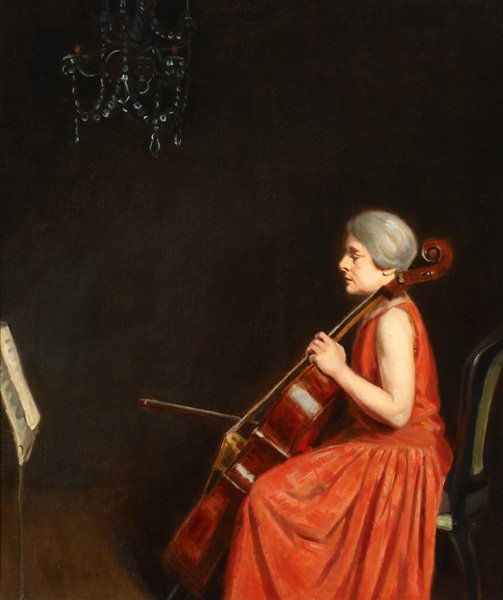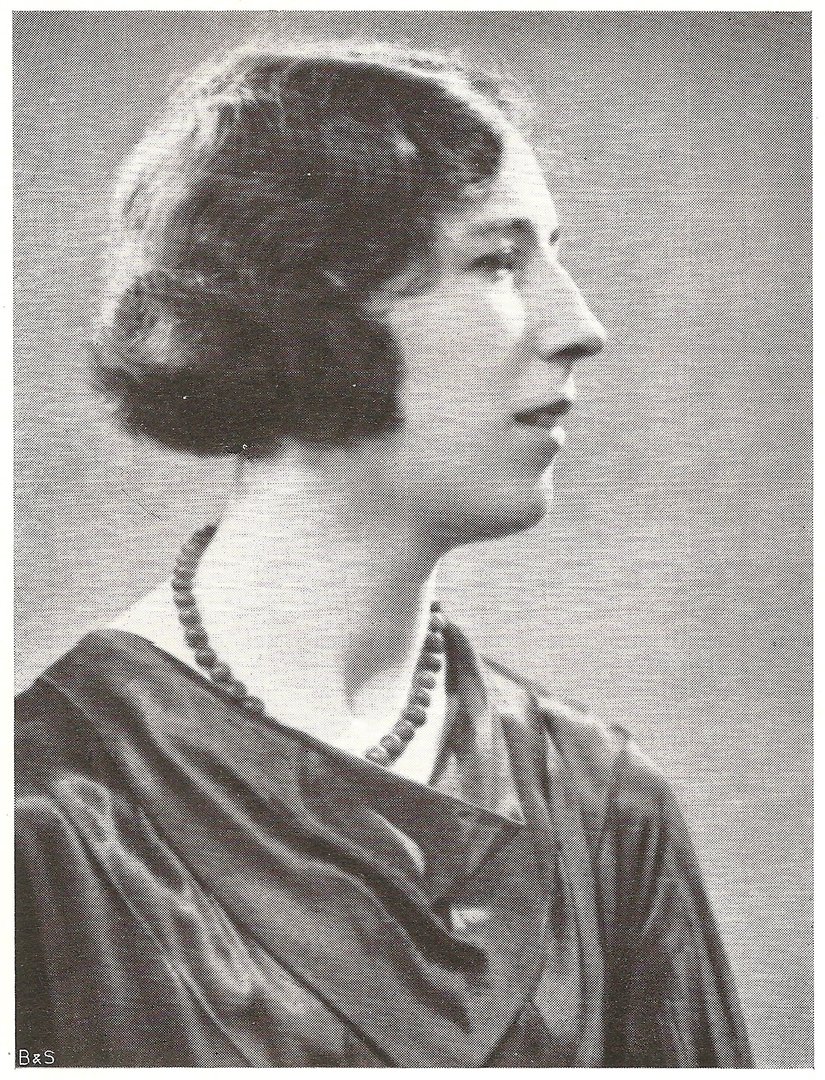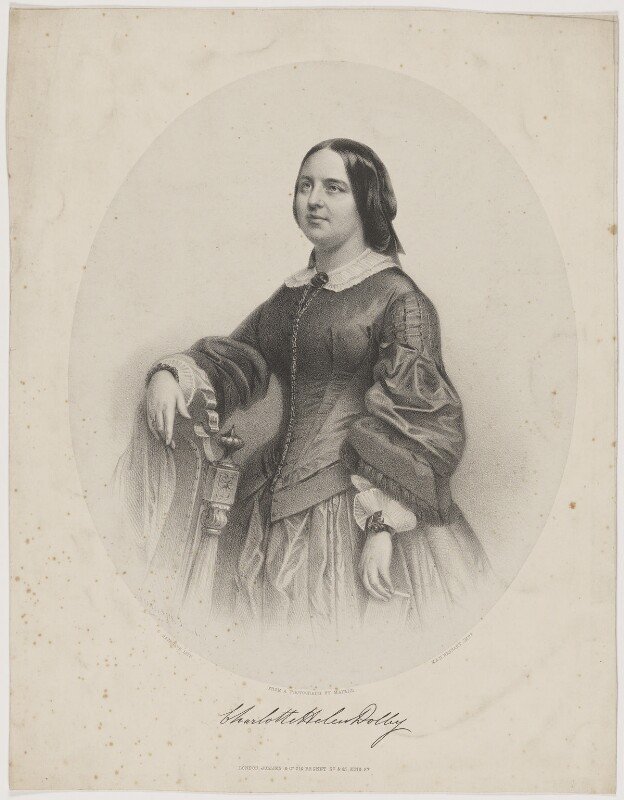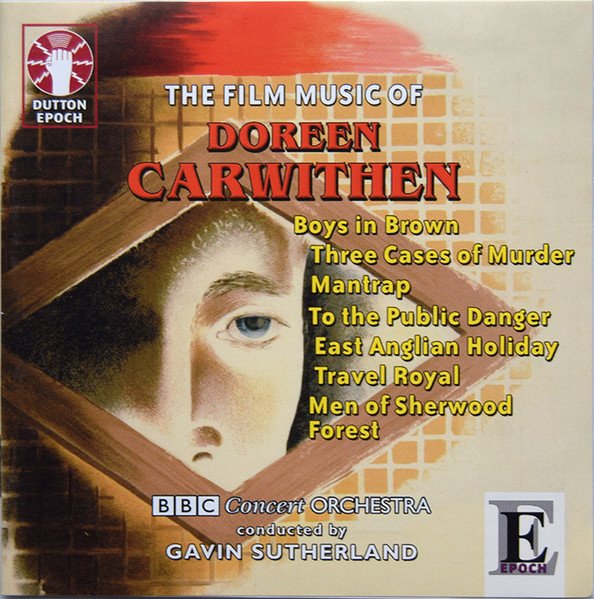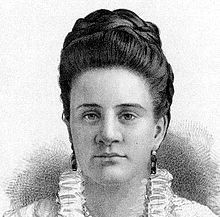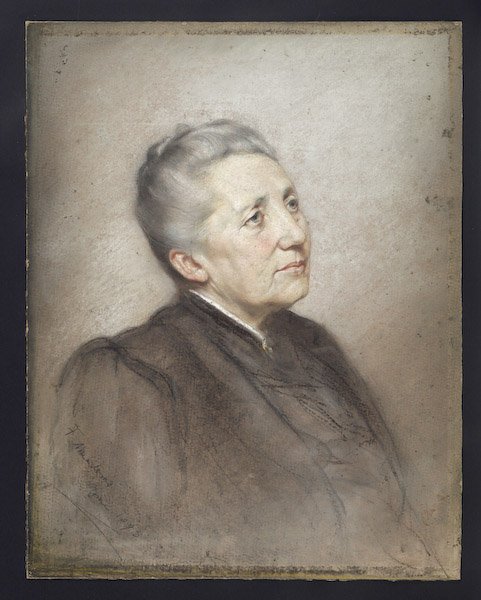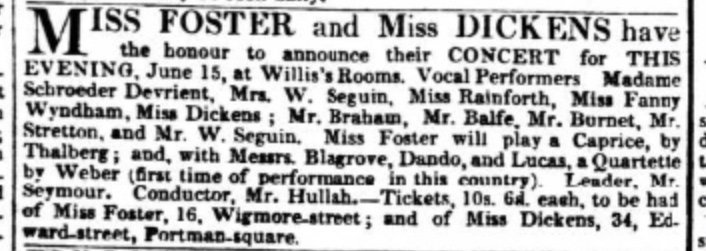The first female students of the Academy
When the Academy opened in 1822, it was “for the maintenance and general instruction in music of a certain number of pupils,' not exceeding at present forty males and forty females.” The general idea was that these young musicians would be able to “enter into competition with, and rival the natives of other countries, and to provide for themselves the means of an honourable and comfortable livelihood.”
In the event, on 8 March 1822 ten girls and ten boys were admitted as the foundation students. These young people ranged in age from 10 to 15 – it is a common error in histories to believe that the Academy was always for an older generation. Unlike its rival over in Paris, however, which was there for musicians on the verge of the profession already, the Academy wanted to get in early in the educational journey. It wasn’t until well into the twentieth century that the average age rose to what it is now, i.e. tertiary age.
There are several histories of the Academy. Frederick Corder wrote the first one in celebration of the centenary, in 1922. He sets out in some tortuous detail all the meetings and ruminations leading to the opening, then finally gets to the whole point of the exercise, the students themselves, listing those first lucky twenty:
Corder, with a startling lack of imagination and social comprehension, goes on to say,
“The order in which these names are placed is according to the number of votes they obtained, and therefore according to their apparent talent at the time, for they were elected purely on their merits, Nearly all the boys distinguished themselves in after life, but not one of the girls, a fact for which I offer no explanation. ”
It would not be until the late 1830s that the female students began to make themselves more known on the platforms and publishing houses of the country, with the advent of the generation that included such names as Kate Loder, Clara Macirone and Charlotte Sainton-Dolby. It might well be noted that this generation of female students had recourse to the same teachers as the boys did, although still not quite the same range of subjects. This is not so much an indictment of the teachers the first girls had, who were perfectly well skilled in both music and education, but a reflection of the explicit assumption that girls learned music for a different purpose, one that did not include a professional career beyond the livelihood stipulated in the Academy’s first set of regulations.
Silvano Arieti’s fantastically-named book Creativity: The Magic Synthesis has a chapter dedicated to the kinds of factors that help foster creativity in artists, and the ways in which the society around them can help rather than hinder. He has a list of nine suggestions, ranging from bluntly pointing out that people not only need the tools of their trade, but a financial independence that allows them to purchase these as and when needed, to highlighting the need, in some form or another, of recognition of achievement. In amongst these factors, he points to what he calls the “interaction of significant persons” – in other words, the need for excellent teaching, mentors, collaborative projects, and all the other * of a creative community. No one creates in a vacuum, even the artist alone in an attic garret, shuffling papers off into a forgotten drawer. Allowing female students access to the same community as the males were was the first step towards allowing them entry to that community. I am reminded of Carl Friedrich Zelter’s Liedertafel in 1820s Berlin, when the men sat around a table and sang, while the women sat in an outer circle, listening. As Wilhelm Bornemann’s 1851 history described it:
“In the legends of the Round Table of the British King Arthur, or Artus [...] Queen Guinevere, Arthur’s wife, also appeared with her women. Not at the actual Round Table, but nearby in a window nook, the great noblewoman waited, keeping watch over the happy affairs of the knights and bards.”
In the community but not of it…
A look at the difference in the timetable for girls and boys is also telling – several crucial differences immediately spring out. For a start, there is less practice time for the girls, right from the beginning of the day, when boys rise half an hour earlier to fit practice around prayers and breakfast. Girls don’t get to their instruments until 9 o’clock. They also lose half a day on Wednesday. The other most obvious discrepancy is simply the sheer diversity of the boys’ exposure to musical sound – of course, there is not a whisper of a brass or woodwind instrument in the girls’ timetable. Its really not hard to see that despite those lofty words at the beginning, the Academy saw a feminine “livelihood” as rather less fraught with possibility than the masculine equivalent (and to some degree, vice versa - who could say if there were boys who longed to follow in the footsteps of harpist Nicholas-Charles Bochsa, to all evidence an inspiring teacher?).
I am also quite fascinated at the thought of “tuning taught” – I wonder what this entailed?
The foundations being laid here, however, shouldn’t be underestimated. By the time we arrive at the latter part of the century, things are becoming different, and female students were at the forefront of public Academy life, especially in the number of composers having their works performed in the Academy’s concerts. Remember Liszt’s first piano “recital”, performed in London’s leading concert venue, the Hanover Square Rooms, just around the corner from the Academy’s first site in Tenterden Street? That was the venue for many of the RAM events, and thus the site of many premieres of works by female students. How this translated into the wider music culture is a different question, of course with a much larger pool of factors, not to mention the immeasurably complex question of reception.
In February’s blog entry, we will look at some of the next generation of women who had a RAM education behind them. The mid-nineteenth century London music scene was awash with ex-RAM students - singers, pianists, teacher, composers, including one who was shipwrecked, rescued, and continued on a world tour as though it were all in a day’s work. See you all next month!
The Janusian Blog Entry
This year, I decided to dedicate the Salon Without Boundaries social media presence to birthdays of women composers. Over three platforms, we have celebrated the birth of 1,405 composers, never missing a day. We covered women from the sixteenth century to the mid-twentieth - I decided to have a cutoff point of 1970, just to keep my time manageable. I found composers from all corners of the globe, from six continents – and one who at least had her music performed on the seventh – and in so doing, I earned far more than I had imagined I would, not just about the composers themselves, but also about the worlds they inhabited and the people with whom they interacted. I also learned what people are interested in today, sometimes to my surprise!
Of course, there are many, many composers whose exact date of birth is unknown, and some of these will be celebrated in the Salon throughout 2022. The Salon’s social media presence will be a little less this year, as we concentrate on building website content, not to mention rebuilding a real-world musical life after the ravages of the past two years. Still, on both website and SM we will be marking the bicentenary of The Royal Academy of Music in London. Founded in 1822, the Academy’s premise was to provide musical education to young teenagers:
“The object of the Institution, under His Majesty’s patronage, is to promote the cultivation of the science of Music, and afford facilities for attaining perfection in it, by assisting with general instruction the natives of this country, and thus enabling those who pursue this delightful branch of the fine arts to enter into competition with, and rival the natives of other countries, and to provide for themselves the means of an honourable and comfortable livelihood.
With this view it is proposed to found an academy, to be called the “Royal Academy of Music”, for the maintenance and general instruction in music of a certain number of pupils, not exceeding at present forty males and forty females.”
We have an upcoming blog entry devoted to the differences in provision for boys and girls, so we won’t go into that here; we can, despite this, acknowledge that the Academy was ahead of its time in allowing instruction at all to both sexes; its geographically closest equivalent, the Paris Conservatoire, would not admit its first female student until the nine-year-old violinist Camilla Urso entered in 1849. And later in the century, female composers would choose the Academy over its rival institution across London, because of its policy of playing student compositions in every concert, by both male and female composers. This would change around WW1, when the Royal College of Music became the preferred institution for many, due in large part to the stellar teaching staff in the department there. Meanwhile, however, Academy prizes were just as likely to be won by female students as by male, and the prize boards often read like a rollcall of the best composers of the time.
The Academy was one of the first to allow its girls to learn instruments other than the traditionally female singing and piano. In the 1890s there were more female violinists than male, and in 1901 there was at least one female cornet player, Catherine Fidler. This was also the year in which Maude Melliar became the first female winner of a wind instrument scholarship in the UK. Edith Penville on flute followed closely behind. And despite the perceived ‘femininity’ of the piano as an instrument, the sheer weight of talent amongst the women pianists at this time was phenomenal. The singers, too, offered an extraordinary raft of talent and achievement, and it is not an exaggeration to note that the majority of successful productions in London included at least one Academy-trained voice.
Over 2022, we will be celebrating many of these women. All Composers of the Month were trained at the Academy; we will also have a cornucopia of recordings of works by other composers. Even the books will be by ex-students of the Academy, starting with one by a well-known pianist. We look forward to sharing these with you. Please continue visiting us throughout the year for more!
Una Bourne as Pianist
In September, Una Bourne featured on this website as Composer of the Month. Todays, we highlight her as a pianist.
Una Bourne was active as a pianist from c1900 to just before WWII, both live and on record. She started in Australia, where she accrued many a glowing review from a very young age, when she swept the board at local competitions, carrying off every single prize. The accolades continued on her arrival in Europe, both of her live concerts and later, of the many recordings she made:
“The distinction of Miss Una Bourne’s playing seems to lie in the fact that the imagination and thought by which she has formed her musical conceptions is perfectly expressed in her technique.”
“As a pianist Una Bourne plays with her mind and her brain and her heart, as well as her fingers and is the most perfect concert artist to ever grace a concert platform.”
Despite this, she gets rather dismissed in modern reviews. The overview on Naxos labels her “competent, but no virtuoso”, and takes exception to her choice of “popular encores and lighter classics: many works by Chaminade, with whom she studied, as well as pieces by Paderewski, Scharwenka, Smetana, Cyril Scott, Sinding and Sydney Smith” suggesting that “Because of this her reputation today is not high.” The writer goes on to admit that she also recorded pieces “by Granados, Albeniz and Grieg”, thereby inadvertently disclosing his aesthetic priorities. She plays for effect, he says, though does not give details of this.
This hierarchy of repertoire is one that sticks, despite many attempts to demonstrate that “light” music does not mean “trivial”, and that economic success, i.e. writing what your audience likes and will buy, does not necessarily mean a corresponding lack of musical insight. Elaine Borroff writes of this in her defence of parlor music:
“This article is a culmination of unease. For years I had been reading about parlor music, accepting the subtle (and not so subtle) put-downs of that national institution without a murmur. But in some cavern of my mind, a dissonance was resonating, and one day I heard it. Most writers on this subject have used the word limited, applied both to the music and, of all things, to the audience.1 Charles Hamm speaks of “music designed to be performed by and listened to by persons of limited musical training and ability.”2 The clear implication is that parlor music was a style or genre created especially for second- rate performers who deliberately aimed second-rate musical salvos at second-rate listeners. I don’t believe it for a moment. I have no idea how to rank listeners. What persons compose a first- rate audience? Those with an IQ of 132 to the metronome? Those who survived Theory 101 with a B-flat or better? I know of no performer so toploftical as to demand more than persons who come, who listen, and who are willing to respond. Does a doorman check the incoming audience and refuse admission to those below some “cultural” standard? Does the box office at an elite university check the grades of students who want to buy tickets? I knew such statements about and negative characterizations of parlor music were all wrong because I had been there, and it was nothing like that.”
And yet Bourne was a pianist of choice of many highly-regarded musicians, such as Nellie Melba, with whom she toured for many years, and Leopold Godowsky, pianist and teacher. She once was chosen to replace Ferruccio Busoni at short notice in a concert, and on a piano roll of Brahms, shared space with Wilhelm Backhaus, Edwin Fischer and Mita Nikisch. Are we to believe that people then had a lower standard than we do today? What was it about her playing (and personality) that kept her in such demand for decades?
Bourne was a pioneering recording artist, starting a thirteen year relationship with HMV in 1914, when she recorded two of her own pieces, Petite Valse Caprice and Nocturne. She would go on to record around 80 works, from composers as diverse as Chaminade, Paderewski, Beethoven and Cervantes. Most of these recordings were solo, but she also had a successful partnership with violinist Marjorie Hayward. She seems to have had a particular penchant for Scandinavian music, from Grieg to less-programmed composers such as Olsen and Palmgren. Her final set of recordings was made in 1926 and consists of a series mainly of short pieces by herself and Cecile Chaminade, who had featured prominently in her recorded repertoire over the past twelve years.
I have picked four recordings here, that demonstrate the breadth of her offerings, and range in chronology from theValse Caprice of 1914, to Chaminade’s Berceuse Arabe of 1926. There is a very clear, underlying performance aesthetic to all of them: Bourne’s priorities lie with precision, clarity of voicing, and a sense of overall structure rather than detail. There is enough variety to prove that her fondness for tempi on the fast side are not simply an outcome of the necessity of fitting a work onto a four-minute side.
Valse Caprice: recorded 1914
This is an acoustical recording of one of Bourne’s own works. Already there is the trademark clarity, the finger work in the tumbling triplets executed with silvery precision, and attention lavished on the left hand duet in the B section. Sometimes the triplets are given dominance, at other times, the counter-melody. While the waltz rhythm of the left hand is obscured by the combination of Bourne’s voicing and the recording level, one can hear some tantalizingly interesting detail – a highlighting of the tops of chords, or a directive change in rhythmic positioning. With each repetition the phrase endings are subtly different in both rubato and articulation. In contrast to the considerable cuts of later-recorded, longer works, here there is a repeat of the final section that is not in the score.
Kreutzer Sonata: recorded 1918
The recording of Beethoven’s Kreutzer Sonata was the first of several that Bourne would make with violinist Marjorie Hayward, to critical acclaim. There is not really room here fully to explore the fascinating and dynamic performance practice on offer, but I will touch on a few of the more obvious points , saving the finer details of the partnership for a later date.
The first obvious issue is, of course, the cuts needed in order to fit the sonata onto four sides. These are telling for many reasons, including being a treatise on a certain approach to form, and the accuracy of hitting the four-minute target is impressive. Our modern sensibilities, so obedient to the nineteenth-centuy’s exhortation that we should listen to complete works and in silence, shrink at the swathes cut from this Kreutzer. But you know what? If I want the full experience, in itself an aesthetic choice highlighted by current listening habits shaped by streaming sites, I can go elsewhere. This is history-making, the first recording of this work, judiciously pruned to the four sides of 78s that it inhabited. The second movement is permitted to take two sides, meaning that there are only two small cuts, with lost time made up by ignoring repeats. The first movement is sliced to the required four minutes through one huge cut, while the last movement, also one side and thus four minutes, has several, smaller but nonetheless substantial cuts. (The first full-length recording would not be for another eight years, after the advent of electrical recording, when Isolde Menges and Arthur de Greef recorded it for HMV. Their performance comes in at around 34 minutes.) It’s worth noting, too, that the performance offers more proof that Bourne’s tempi are a musical choice, as much as a practical one. The Presto of the slow movement is slow by her standards, at minim=72, while the slow movement is crotchet=48. There are interesting choices here in ensemble – Hayward and Bourne clearly don’t see precision of playing a note exactly together as always the goal of good ensemble – dynamics, and articulation, both of which can stray quite a long way from the literal markings of (most) scores. It’s a fabulous performance, well worth shelving modern biases for.
Rondo alla Turca: 1925
Bourne takes it a good deal faster than almost anyone else at the time, at crotchet=164. In contrast, both Emil Sauer in 1923 and Rachmaninov in 1925 take it at 144, while 1933, Edwin Fischer adopts a stately 120. As a result, Bourne only omits two repeats in the 2’30” she takes to play the piece - and still has time for a ritardando at the end. Possibly as an outcome of this speed, Bourne does have a tendency to “land” on final notes of phrases, although this gives such a clear picture of the structure she is creating that it feels very much deliberate (and is not noticeable in recordings of other Classical era pieces). The clarity is still superb, and one can hear the colour change between major and minor, and particularly into the f# minor section. The way in which she emphasizes a LH crotchet melodic line is a particular highlight.
Berceuse Arabe: recorded 1926
This performance was recorded in the C Studio, Small Queen's Hall, on 18 October 1926, probably making it the last piece Bourne recorded. It was an up-to-the-minute repertoire choice, as the work had only been published the previous year. As already mentioned, Chaminade’s music played a large role in Bourne’s recorded output. It’s worth remembering that at this point, Chaminade herself was still recording and with some success, although her reputation was fading fast in the turn towards neoclassicism and newer modes. Bourne is perhaps a fellow victim of this change in aesthetic, being seen as a relic of a past age that music was surprisingly eager to dissociate itself from. Certainly it’s easy to hear a commonality in performance practice between the two pianists, not just in repertoire but in approach to the keyboard. Bourne clearly enjoys experimenting with the articulation, using very little pedal throughout.
Ninon Vallin in Dimitri Kirsanoff's film of Les Berceaux
In the move to include women composers in the historical landscape, we sometimes tend to obscure the many extraordinary women performers that have helped make music the experience that it is and has been. In part, this is an issue to do with ‘capturing’ – recording is so young, still, that it is easy to forget those performers who came before the clarity of modern technology. But it is also a sign of the hierarchy we often assign within the composer-performer-audience triad, with the performer, albeit at times unconsciously, seen as creatively less authoritative then the composer. I intend to celebrate some of these bygone women performers in the blog, starting today with some fairly unknown film footage from pre-WWII.
Between 1932 and 1940, film director Dimitri Kirsanoff made three short films with collaborator and cinematographer Boris Kaufman, all taking a piece of music as the inspiration and soundtrack. They were part of a wider project by director Émile Vuillermoz to encapsulate music in visual form and all show a different relationship between music and the visual. They range from the extraordinarily moving to the seriously unacceptable, with Kristanoff’s offerings occupying much of that spectrum.
All of Kristanoff’s short films centre around water as a theme. It tumbles through the landscape, around it, over it, sometimes hurling itself at the eye of the spectator. We won’t spend time here on the psychological weight of meaning behind such a choice of theme, be it conscious or unconscious, but will let it provide the backdrop to our focus, i.e. the women who perform in them, through music and drama. It’s striking just how the films demonstrate pretty much the entire gamut of women’s roles in the space of about 15 minutes. I have always found Delys Bird’s summation of these roles, in her 1992 exploration of the relationship between artisthood and motherhood, to be the most succinct and descriptive:
“Major constructions of the feminine in Western patriarchal societies are situated within the discourses of creativity and maternity, but women are positioned in a different gendered relation in each of these discourses. The fa¬miliar, secondary roles assigned to the creative feminine — as muse, nurse, handmaiden, wife or mother — are understood as necessary prerequisites to the environment that will enable masculine creativity to flourish.”
I am most interested in the first film, featuring French singer Ninon Vallin (1886-1961), which seems to me to offer the most complex reading, but the other two must be touched upon. The gradual erosion of female agency from number one to number three is stark and shocking. The final film, La Fontaine d’Aréthuse from 1940, is based on Symanowski’s violin and piano piece of the same name. The interesting part of it is how Kristanoff combines footage of the performers - Jacques Thibaud plays violin, Tasso Janopoulo is on piano - with the storyline. It feels like a very early forerunner of the Oxford Lieder Festival’s shadow puppetry take of performers and protagonists in their film of Erlkönig, though the concert dress of the two musicians in the 1940 film exudes a cultural authority the later film caricatures to an extent. My interest gives way here to extreme discomfort, as the nude female figure of dancer Sabine Earl appears (I had to promise YouTube that I am over 18 in order to view this). According to IMDB, this figure is ‘a vision of divinity’, being chased by The Hunter, who is fully (who’d have thought it?) if scantily dressed. It's not the nudity itself that disturbs me, but the fact that the woman is the only one undressed. Thus we have the single woman in the looked-at position - and her terrified flight leaves us under no illusion as to how powerless she feels - while the men wear the trappings of hegemony. It’s not acceptable to modern, post-Laura Mulvey eyes.
The 1936 film of Mompou’s Jeune Fille au Jardin is at least clothed, as Magda Tagliaferro plays the backcloth to dancer Clotilde Sakharoff. Again, we see both pianist and dancer, Tagliaferro bookending the whole with her visual presence, and Sakharoff occupying the middle section. This has a definite feel of a choreographed rendition of the piano music. Sakharoff takes many cues from the piano, occasionally to faintly and probably unintended comic effect, and making the whole feel the least experimental of the three films (although Tagliaferro lives up to her reputation as an innovating interpreter by making some notable choices in her own choreography, for example the exaggerated leaps of the opening line).
The first film, Les Berceaux of 1932, on Fauré’s song, is to my mind the most interesting and certainly the most moving. It’s interesting if unsurprising that the pianist remains anonymous here, in the accompanying role. Ninon Vallin takes centre stage as both musician and actor, her trademark clarity of language emanating from every second that she sings. She is first to be featured in the opening credits, in the largest font, before cinematography, and even the song writers. I choose this term carefully, as Sully Prudhomme, the poet, is listed above the composer, in the same size font, in a move that may feel surprising in comparison to common etiquette of classical music programme listings.
The film opens with an unaccompanied choral vocalise across a series of serene visuals. These segue from seaside to boat to house, as though the boat is the bridge between nature and humanity. Gradually, as the piano starts with the rocking figure of Fauré’s introduction, the camera pulls back into a dark room, the natural world now seen through a window. We see Vallin, the only musician to act in these films, appearing in costume, as she rocks the cradle.
The room creates a dark foreground, with Vallin’s equally dark figure turned from the camera towards the window in a manner reminiscent of Caspar David Friedrich’s famous painting of the woman at the window. Unlike that iteration, however, it’s clear that this woman sees not what is outside, but what is in her mind’s eye, something beyond physical vision.
The window opens at the second verse - Mais viendra le jour des adieux, as though that first word, the ‘but’ that signals something more, has unlatched it. We see the men for the first time, and Vallin and her surroundings vanish for a few bars into the wave that crashes through the window. It brings the last verse with it, before the water calms at the end, on an incoming tide. The sea returns, without bearing its cargo of ship and men, and the piano stills to nothing.
Et ce jour-là les grands vaisseaux,
Fuyant le port qui diminue,
Sentent leur masse retenue
Par l’âme des lointains berceaux.
There are many ways of reading Prudhomme’s words, and what Fauré finds in them, but here I find both Vallin’s observational, slightly reserved tone, and Kristanoff’s visual world, offer a truly empathetic interpretation. There is no complete experience here; both the women in their homes, gazing longingly out into the external world, and the men, remembering that home they leave behind them, yearn for what is missing. While the darkness feels both stifling and protective, there is a real sense of regret for the men out on the seas, missing the child and its growing. Music and film feel like an observation on the parent-child relationship that excludes, at the same times as it yearns for the third person, and on the longing for new horizons that always realizes implicitly what it leaves behind.
"And loved you better than you knew": finding the whole story
Over on Twitter and Facebook, each day we are commemorating birthdays of women composers. Although for many women we do not know the specific birth date, we have a full almanac (including Leap Day) of composers from the last 500 years.
One such composer is Mary Dickenson-Auner, whose birthday was yesterday. Dickenson-Auner was an Irish violinist-composer, who wrote works ranging from symphonies to violin sonatas, and also happened to have collaborations with both Bela Bartok and with Arnold Schoenberg, giving the first public performance of Bartok’s violin and piano sonata No. 1 in 1922.
In reading the biographies of Dickenson-Auner, it struck me yet again, as it has with so many other biographies of women, how overshadowed she is in her own story by the men with whom she is associated. Despite being a phenomenal player, composer and teacher, despite a career that took her all over the world, she is often relegated to a supporting role; a secondary presence that is only looked at, and must not speak. And thus, much of her story is lost to us (as certainly most of her own words are); it is the story of Bartok and his compositions that we are offered.
There is a whole plethora of reasons for this, from the composer-performer hierarchy that informs most of Western classical music history, to the idea that ‘woman’ cannot be creative in her own right, but must rely on the creativity of men for her expression. George Upton spent a large proportion of his 1890 book Women in Music explaining why this was the case; women are too emotional, they become discouraged too easily, they prefer supporting roles anyway. He concludes:
“For these and many other reasons growing out of the peculiar organization of woman, the sphere in which she moves, the training which she receives, and the duties she has to fulfil, it does not seem that woman will ever originate music in its fullest and grandest harmonic forms. She will always be the recipient and interpreter but there is little hope she will be the creator.
However this may be, there is a field in which she has accomplished great results, namely, her influence upon the production of music. She has done so much for music that it is no exaggeration to claim that without her influence many of the masterpieces which we now so much admire might not have been accomplished at all; that the great composers have often written through her inspiration; and that she has, in numerus notable instances, been their impulse, support, and consolation.”
Women themselves have quite a different view on this role, as well as their own contributions to the creative outpourings across the centuries. Margaret Steele Anderson’s poignant poem sums up the inner turmoil involved:
“Song
The bride, she wears a white, white rose — the plucking it was mine;
The poet wears a laurel wreath — and I the laurel twine;
And oh, the child, your little child, that’s clinging close to you,
It laughs to wear my violets — they are so sweet and blue!
And I, I have a wreath to wear — ah, never rue nor thorn!
I sometimes think that bitter wreath could be more sweetly worn!
For mine is made of ghostly bloom, of what I can’t forget —
The fallen leaves of other crowns — rose, laurel, violet!”
Elizabeth Akers Allen’s longer poem points to the cost of the silence imposed on these women:
“Left Behind
It was the autumn of the year;
The strawberry-leaves were red and sere;
October’s airs were fresh and chill,
When, pausing on the windy hill,
The hill that overlooks the sea,
You talked confidingly to me, -
Me whom your keen, artistic sight
Has not yet learned to read aright,
Since I have veiled my heart from you,
And loved you better than you knew.
You told me of your toilsome past;
The tardy honors won at last,
The trials borne, the conquests gained,
The longed-for boon of Fame attained;
I knew that every victory
But lifted you away from me,
That every step of high emprise
But left me lowlier in your eyes;
I watched the distance as it grew,
And loved you better than you knew.
You did not see the bitter trace
Of anguish sweep across my face;
You did not hear my proud heart beat,
Heavy and slow, beneath your feet;
You thought of triumphs still unwon,
Of glorious deeds as yet undone;
And I, the while you talked to me,
I watched the gulls float lonesomely,
Till lost amid the hungry blue,
And loved you better than you knew.
You walk the sunny side of fate;
The wise world smiles, and calls you great;
The golden fruitage of success
Drops at your feet in plenteousness;
And you have blessings manifold: -
Renown and power and friends and gold, -
They build a wall between us twain,
Which may not be thrown down again,
Alas! for I, the long years through,
Have loved you better than you knew.
Your life’s proud aim, your art’s high truth,
Have kept the promise of your youth;
And while you won the crown, which now
Breaks into bloom upon your brow,
My soul cried strongly out to you
Across the ocean’s yearning blue,
While, unremembered and afar,
I watched you, as I watch a star
Through darkness struggling into view,
And loved you better than you knew.
I used to dream in all these years
Of patient faith and silent tears,
That Love’s strong hand would put aside
The barriers of place and pride,
Would reach the pathless darkness through,
And draw me softly up to you;
But that is past. If you should stray
Beside my grave, some future day,
Perchance the violets o’er my dust
Will half betray their buried trust,
And say, their blue eyes full of dew,
”She loved you better than you knew.””
Fanny Hensel, who knew quite literally what it meant to be left behind, when her brother Felix was taken to meet Goethe and she was required to stay at home, was known as the Cantor in her family – the musical support and critic of Felix (his corresponding critique of her works did not earn him the same title). How fascinating, then, that in her piano trio, she chose to quote from the first work to see public light of day without any input from her, Felix’s oratorio Elijah.
It is an ongoing story, and will be revisited again and again. Today, let the last word belong to Mary Dickenson-Auner herself. Here is the third movement of her Irish Symphony, the Caoine (Lament). You can find the whole symphony on YouTube, played by the Mährische Philharmonie.












